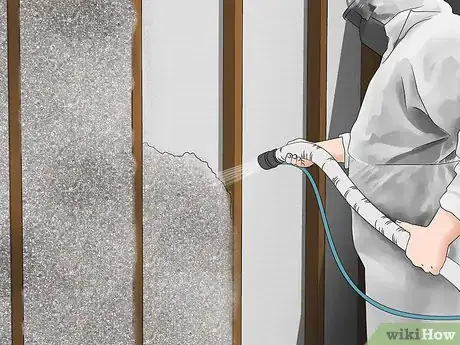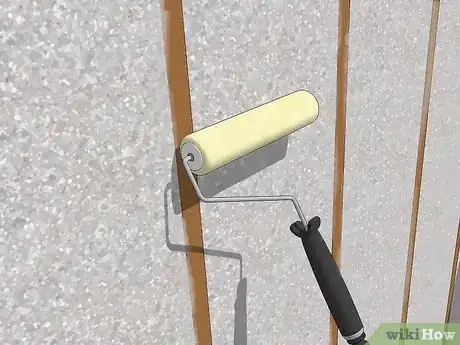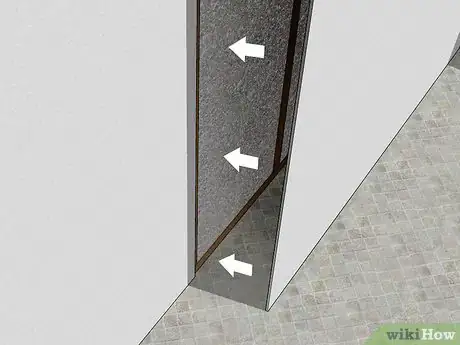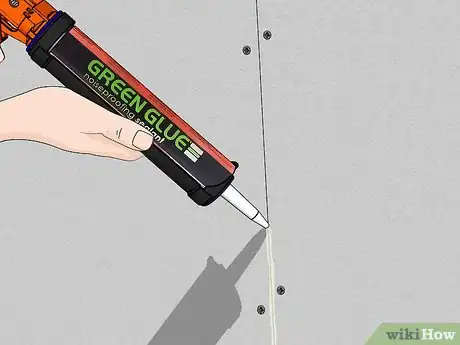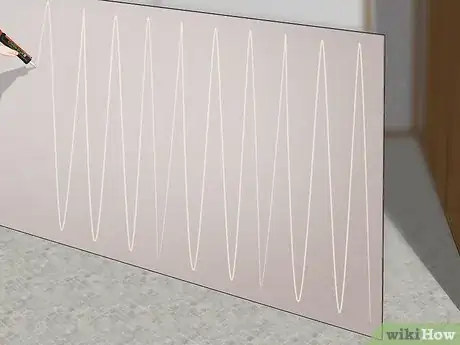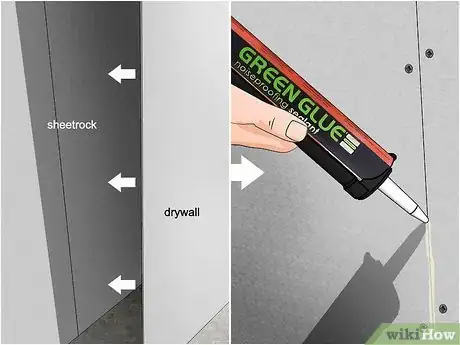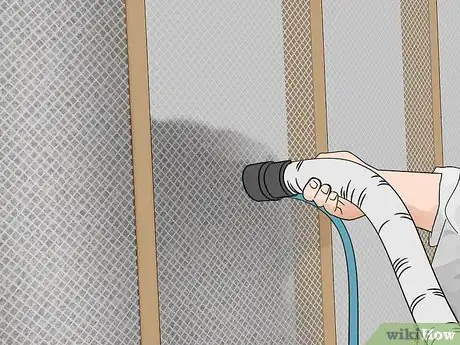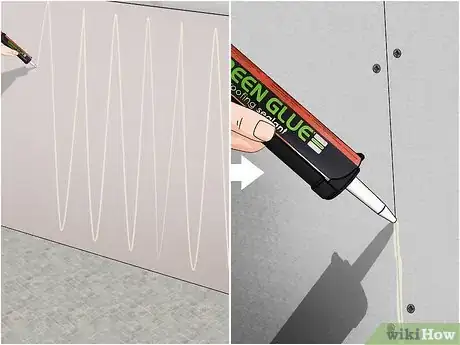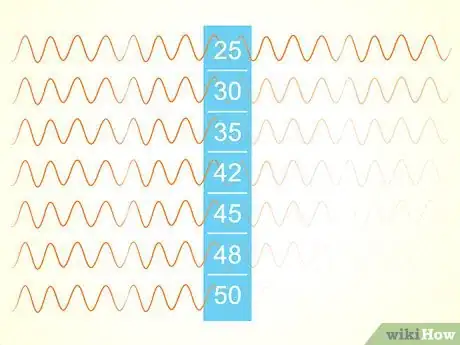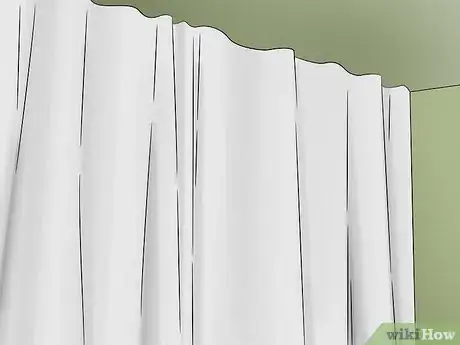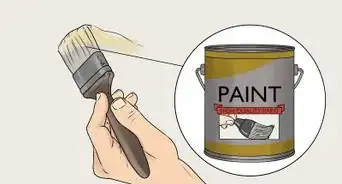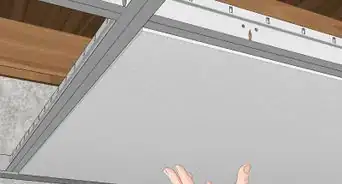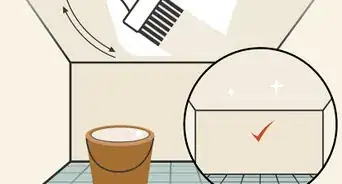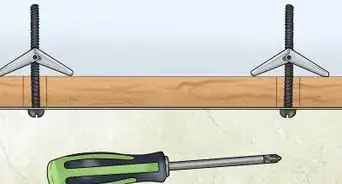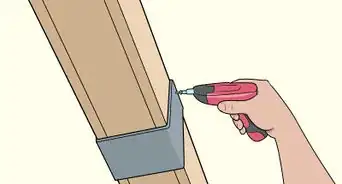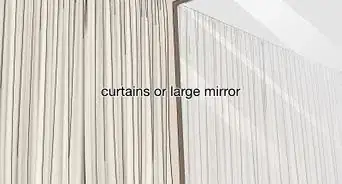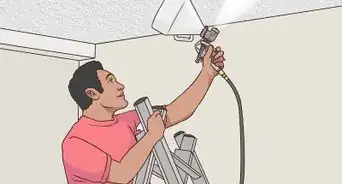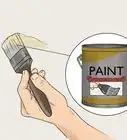This article was co-authored by Andrew Peters. Andrew Peters is an Architecture and Construction Specialist and a Principal at Peters Design-Build, a full service architecture and construction firm in the San Francisco Bay Area. With over 20 years of experience, Andrew specializes in sustainable and holistic design and building practices. Andrew holds a Bachelor of Architecture and a Project Management Professional (PMP) certification and is a Leadership in Energy and Environmental Design (LEED)-Accredited Professional. He served as Project Manager for the international-award-winning “Refract House,” Team California’s entry in the 2009 U.S. Department of Energy Solar Decathlon, a project featured in over 600 online and print articles.
There are 11 references cited in this article, which can be found at the bottom of the page.
This article has been viewed 280,601 times.
Everyone would like a little more peace and quiet within their homes, but most people are unsure of how to go about making this happen. The following techniques are ideal for new construction, however, most walls and ceilings can be retrofitted to accept the soundproofing techniques. You can apply these instructions for soundproofing common walls between apartments and condos, soundproofing a home theater or even bedrooms.
Steps
Soundproofing During Wall Construction
-
1Install the basic frame and one side of the wall, leaving the wood studs exposed. You'll need the frame of the wall already installed, as well as one side of the actual wall. You will then stuff the wall with sound-proofing before sealing up the wall.
- If you're working on a wall, you can seal up either side first -- it shouldn't matter.
- If you're working on the ceiling, you want to soundproof it from the top. Seal up the ceiling of one room, then work on the floor of the room above it.[1]
-
2Use putty pads, often sold as "fire stoppers" to seal up electrical outlets or boxes. This material, though often used to prevent electrical fires, molds beautifully onto electrical boxes, wires, and other uneven items in the wall.Advertisement
-
3Blast the exposed wall with damp-blown cellulose, a recycled insulation and sound proofing material. Made from recycled newspaper, you spray this on the wall, where it naturally fills into cracks and holes for even, solid insulation. Cover up any outlets or pipes with electrical tape before beginning. Wearing a respirator, use the damp-blown cellulose hose to cover the entire wall, starting from the bottom up.
-
4Press the cellulose down flat before it dries. Using the roller or scrubber provided with the damp-blown cellulose, flatten the insulation to the wall, filling in any gaps as you work.[4]
- You will need to wait a day for the flattened cellulose to dry before proceeding.
-
5Seal up the wall with the first layer of sheetrock. Clean up any excess insulation so that it is flush with the wall, then hang the first layer of sheetrock to cover up the insulation. A double sheet of drywall will significantly help dampen sound. If you're set on a single layer, however, apply soundproofing adhesive to the back of the drywall now.
-
6Use green-glue sealant to cover up all the edges on the sealant.[5] Use an acoustic-damping sealant to get every edge of the drywall. Don't skimp here -- any air path you have needs to be closed off to prevent noise. Acoustic sealant remains permanently flexible, making it a great soundproofing solution. Make sure you caulk:
- The ceiling line
- The floor line
- Where the sheets of meet drywall.
- Any outlet or electrical holes.
-
7Apply soundproofing compound to the back of your drywall sheet in a zig-zag pattern. Take your tube of green glue and cover the back of your sheetrock with the glue. You'll likely need 1-2 full tubes for each 6-foot sheet. While it looks like a thin, useless layer, the Green Glue forms a thin, sound-proofing layer to absorb vibrations and significantly dampen noise.
-
8Install the second layer of drywall (backed by the glue) like normal. Cover the back of the pad with zig-zagging acoustic glue, install the sheet, and repeat. Note that, if you're not double-hanging the drywall, you can still add this glue to your first round of sheet rock to dampen some sound.
- Re-caulk over any exposed edges when done.
- Good drywall installations never let the seams overlap between the first and second layers. They are staggered.[6]
-
9Continue with construction like normal, as sound-proofed walls are no different than any other. Because of the double drywall, the room is about 5/8" shorter than it would normally be.
Using Alternative Construction Methods
-
1Consider buying "quiet rock" instead of normal drywall. This is much more expensive, but significantly lowers the number of steps needed to sound-proof a room. You install like normal, and it is specially made to absorb sounds and frequencies.
-
2Try installing the simpler, easier "dry blown" cellulose. Dry blown insulation requires that you attach a netting to the exposed wall, which catches the cellulose and holds it on the wall. It takes a bit more time, but it is doable by yourself without expensive equipment. All you need is a standard hopper.[7]
-
3Fill the cavity between the studs with a fiberglass or mineral wool insulation instead of damp blown cellulose. Purchase it in bulk, then cut it to fit each panel of the wall. Slide it in place and attach to the back of the wall according to the manufacturing instructions. This is much harder to work with, and get right, but it can be cheaper and makes much less of a mess. To use it:
- Wear a respirator at all times.
- Seal any electrical boxes with soundproof caulk.
- Cut your insulation (R-11 fiberglass works well) with a utility knife.
- Screw backing boards, like 1/2 plywood, to the edges of the wall to provide a base for drywall nails.
- Attach the resilient channels, long metal bars, horizontally across the wall.[8]
-
4Apply a single layer of drywall with soundproofing compound. Instead of installing the first sheet like normal then proofing and installing the second, simply apply the glue straight to the first sheet. Work in a zig-zag pattern, covering the whole sheet and then install it like normal. Afterward, continue on with the noise-proof caulking.
-
5Isolate or float your drywall off of the studs by using resilient channel or sound isolation clips.[9] Basically, sound is transmitted through vibrations, so touching walls will vibrate each other more than walls that don't touch. Decoupling is when you separate the walls to prevent sound transmission. Keep in mind that resilient channels are prone to failure, and is not specified by the Steel Stud Manufacturers Association, so be careful. You could also:
- Float the walls or floor
- Isolating studs with joist gasket tape.[10]
-
6Understand Sound Transmission Class (STC) ratings when choosing construction materials. STC is used to tell you how good a material is at soundproofing. A higher STC means it will do much better at soundproofing. Aim for materials with an STC between 30-40.[11]
Making DIY Soundproofing (After Construction)
-
1Lay down a carpet. Springy, cushy carpet is great at absorbing sounds and frequencies in the room, cutting down noise significantly. Even several thick rugs can help keep noise down, and are an important step in soundproofing. Don't forget about the floor![12]
-
2Purchase and apply mass-loaded vinyl to the walls and ceiling. Mass absorbs sound, and this thin sheet is made to absorb a lot of it. You buy it by the roll, which you then cut and apply to the walls, ceiling, or floor. Make sure that, as you work, you don't leave gaps between the sheets. This significantly decreases effectiveness.
-
3Use acoustic caulking to fill in any air holes in the room. Cracks, seams, and exposed bits of wall and duct will all pull sound in from other parts of the house. Even if the wall or ceiling is already built, a little sound-proof caulking can close out unwanted noises.
- Cover up wide or open door and window frames with an adhesive weather strip.
- Pay special attention to air ducts -- a lot of sounds often enter through them.[13]
-
4Tack thick blankets up to the walls for a temporary solution. Remember -- mass is your friend. Big, thick blankets on the walls will absorb sound from the outside much like insulation would on the inside. It doesn't always look great, but it will soundproof in a pinch.[14]
Expert Q&A
Did you know you can get expert answers for this article?
Unlock expert answers by supporting wikiHow
-
QuestionHow can I soundproof a room cheaply?
 Andrew PetersAndrew Peters is an Architecture and Construction Specialist and a Principal at Peters Design-Build, a full service architecture and construction firm in the San Francisco Bay Area. With over 20 years of experience, Andrew specializes in sustainable and holistic design and building practices. Andrew holds a Bachelor of Architecture and a Project Management Professional (PMP) certification and is a Leadership in Energy and Environmental Design (LEED)-Accredited Professional. He served as Project Manager for the international-award-winning “Refract House,” Team California’s entry in the 2009 U.S. Department of Energy Solar Decathlon, a project featured in over 600 online and print articles.
Andrew PetersAndrew Peters is an Architecture and Construction Specialist and a Principal at Peters Design-Build, a full service architecture and construction firm in the San Francisco Bay Area. With over 20 years of experience, Andrew specializes in sustainable and holistic design and building practices. Andrew holds a Bachelor of Architecture and a Project Management Professional (PMP) certification and is a Leadership in Energy and Environmental Design (LEED)-Accredited Professional. He served as Project Manager for the international-award-winning “Refract House,” Team California’s entry in the 2009 U.S. Department of Energy Solar Decathlon, a project featured in over 600 online and print articles.
Architecture & Construction Specialist
Warnings
- Penetrations in the wall or ceiling can allow sound to sneak (flank) through your new wall or ceiling. Common problems can come from recessed ceiling can lighting, ceiling fan, ventilation ducts, wall outlets, etc.⧼thumbs_response⧽
- There are lots of various products on the market that people will claim to be soundproof, be sure to do proper research when purchasing products. Competent products will have independent Transmission Loss testing following ASTM e-90 protocols.⧼thumbs_response⧽
- There are varying degrees and expectations on soundproofing a wall. Keep in mind that if you can reduce the amount of noise from passing through that wall by 10 Decibels that you have cut the amount of noise that can be heard by 50%.⧼thumbs_response⧽
References
- ↑ https://www.youtube.com/watch?v=Wf6ExtPR9Xs
- ↑ http://www.greenbuildingadvisor.com/articles/dept/green-building-blog/insulating-damp-spray-cellulose
- ↑ https://www.youtube.com/watch?v=Wf6ExtPR9Xs
- ↑ http://www.greenbuildingadvisor.com/articles/dept/green-building-blog/insulating-damp-spray-cellulose
- ↑ Andrea Beaulieu. Professional Tailor & Fashion Designer. Expert Interview. 8 May 2020.
- ↑ https://www.youtube.com/watch?v=Wf6ExtPR9Xs
- ↑ http://www.hgtv.com/remodel/mechanical-systems/cellulose-insulation
- ↑ http://www.familyhandyman.com/walls/how-to-soundproof-a-room/view-all
- ↑ Andrea Beaulieu. Professional Tailor & Fashion Designer. Expert Interview. 8 May 2020.
- ↑ http://ehomerecordingstudio.com/soundproof-room/
- ↑ http://www.diynetwork.com/how-to/rooms-and-spaces/walls-and-ceilings/soundproofing-a-wall
- ↑ http://ehomerecordingstudio.com/soundproof-room/
- ↑ http://www.apartmenttherapy.com/soundproof-your-rental-bedroom-in-under-10-minutes-for-40-apartment-therapy-reader-submissions-212148
- ↑ http://porch.com/advice/whats-best-way-soundproof-apartment/
- Videos provided by Matt Risinger
About This Article
To soundproof a wall or ceiling during construction, start by installing a basic frame. Once that’s set up, spray the area with damp-blown cellulose, which is a soundproofing material. Then, use a roller to press the cellulose flat before it dries. Lastly, seal the wall with sheetrock, using sealant to cover up and secure the edges. If you are soundproofing after construction, consider laying down carpets and applying mass load vinyl to the walls to absorb sound. To learn more about soundproofing a wall or ceiling, like how much cellulose to use, read on!


